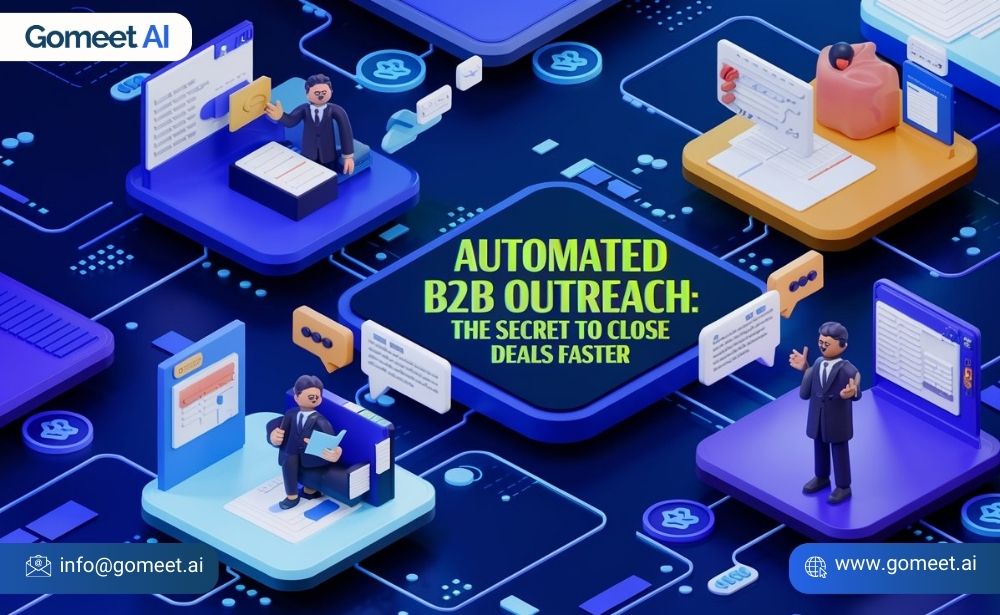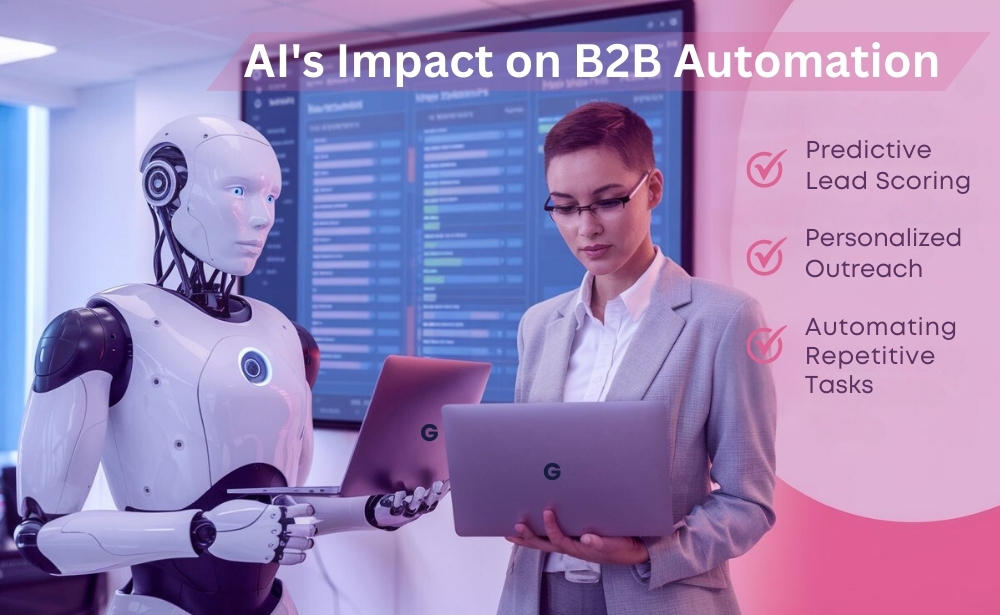Sales outreach has long been a critical component of any B2B strategy. Traditional sales approaches, which rely heavily on manual efforts like cold calling, lead research, and repetitive follow-ups, are often time-consuming and inefficient. As businesses grow, the need for scalable and effective solutions becomes more apparent. This is where automated B2B outreach enters the picture.
By leveraging automation technology, businesses can optimize their sales process, allowing their teams to focus on higher-value tasks. Automation handles the routine—like sending emails, tracking engagement, and scheduling follow-ups—while your salespeople can concentrate on closing deals and building relationships. Let us now delve into the details.
What is Automated B2B Outreach?
Automated B2B outreach leverages technology to streamline and automate repetitive, time-consuming tasks in the sales process. These tasks typically include identifying potential leads, sending personalized emails, scheduling follow-ups, and tracking interactions or responses from prospects. By automating these functions, businesses can ensure a more consistent and efficient approach to lead nurturing, significantly reducing the manual effort required from sales teams.
B2B Automation not only saves time but also improves accuracy and scalability, ensuring that outreach remains personalized and relevant to each prospect’s needs. When integrated with AI, automated B2B outreach can analyze data in real-time, optimize communication strategies, and provide valuable insights to improve lead engagement, making it a game-changer for businesses looking to scale their sales efforts effectively.
Why Automate B2B Outreach?
1. Scalability
Manual outreach limits the number of prospects a team can effectively manage. With automated outreach, B2B businesses can scale their efforts exponentially. Instead of handling a small batch of leads, automation can manage hundreds or even thousands of potential customers at once. This doesn’t mean losing personalization—advanced automation tools can tailor communication based on specific data points for each recipient.
2. Improved Accuracy
Human error is an inevitable part of manual processes. Whether it’s missing a follow-up or sending the wrong information to a prospect, these mistakes can impact sales outcomes. B2B automation ensures consistency. Once set up, it will send follow-ups and personalized messages at the right times, improving the accuracy and effectiveness of your outreach.
3. Cost-Effectiveness
Instead of hiring more sales reps to increase outreach, automating outreach allows you to expand your efforts without a proportional increase in costs. This makes automation an affordable way to maximize lead generation and engagement, especially for small to medium-sized businesses.
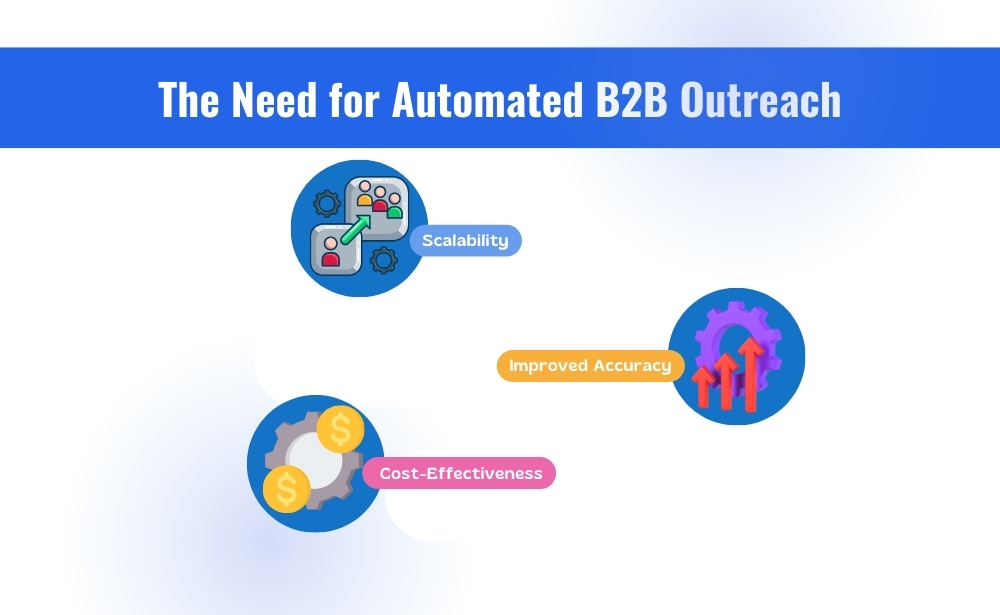
Key Components of an Effective B2B Outreach Strategy
Before diving into automation, it’s essential to have a robust B2B outreach strategy in place. Automation tools are only as good as the strategy behind them.
1. Targeted Lead Generation
One of the primary goals of a B2B outreach strategy is to find the right leads. Not all leads are created equal, and targeting the wrong ones can be a waste of time. Automation tools allow you to set filters based on specific criteria, like job title, company size, or industry. This ensures that your outreach efforts focus only on prospects with a higher likelihood of converting into customers.
2. Personalized Communication
Automation doesn’t mean sending generic emails to hundreds of prospects. The best automation tools allow for personalized communication based on the recipient’s behavior, preferences, and interactions with your company. This could mean sending different email sequences based on which stage of the buyer’s journey the prospect is in, or personalizing content to address specific pain points they’ve expressed interest in.
3. Follow-Up Automation
Most prospects don’t convert after a single outreach attempt. Successful B2B outreach requires persistence, with multiple follow-ups often being necessary to close a deal. By automating follow-ups, businesses can ensure that they stay top-of-mind with prospects without needing to manually track every interaction. Automated follow-up sequences can trigger based on actions, such as opening an email or clicking a link, to keep prospects engaged.
4. Tracking and Analytics
Automation tools don’t just send emails and track follow-ups; they also provide insights into how prospects are interacting with your outreach. Are your emails being opened? Which links are prospects clicking? These insights allow you to adjust your B2B outreach strategy as needed, improving your overall effectiveness. The more data you have, the better equipped you are to make decisions that enhance your outreach efforts.
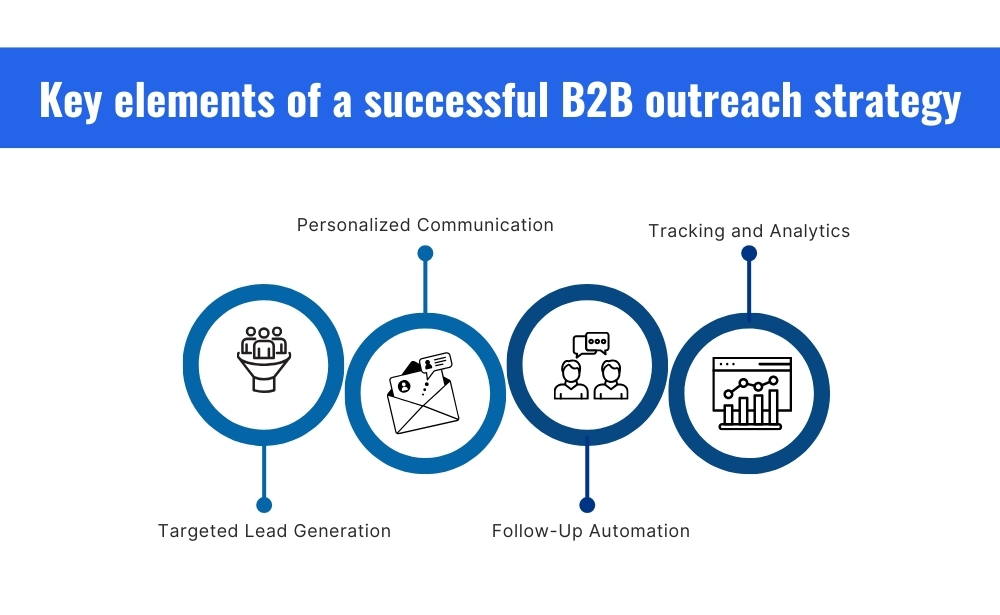
The Role of AI in B2B Automation
AI is truly changing the game when it comes to B2B automation. While traditional automation handles repetitive tasks, AI goes a step further by optimizing those tasks and making intelligent, data-driven decisions in real-time.
This enables businesses to not only streamline their processes but also enhance the effectiveness of their outreach strategies, delivering more personalized, timely, and relevant interactions with prospects. Here’s how AI is elevating B2B outreach:
1. Predictive Lead Scoring
AI can analyze large sets of data to predict which leads are most likely to convert. This means your sales team can prioritize high-quality leads, reducing the time spent on less promising prospects. AI-driven lead scoring is far more accurate than traditional methods because it considers a wider array of factors, including behavioral data, historical interactions, and predictive modeling.
2. Personalized Outreach at Scale
AI enables businesses to send personalized messages to large numbers of prospects without sacrificing relevance. By analyzing past interactions and behavioral patterns, AI can automatically generate personalized content for each prospect, ensuring that every touchpoint is meaningful.
3. Automation of Repetitive Tasks
Beyond lead scoring and personalization, AI automates time-consuming tasks like follow-up emails, scheduling meetings, and managing contact lists. This ensures that every prospect receives timely communication, freeing your sales team to focus on building relationships and closing deals.
Common Challenges in Automated B2B Outreach
Like any strategy, automated B2B outreach comes with its challenges. However, understanding these challenges can help you mitigate risks and improve results.
1. Over-Automation
While automation saves time, overrelying on it can sometimes make your outreach feel impersonal. It’s crucial to strike a balance between automation and human touch. Automating routine tasks is essential, but when it comes to closing deals or negotiating contracts, personal interaction is still key.
2. Data Privacy
With automation tools collecting and processing vast amounts of data, data privacy becomes a significant concern. Ensure that your outreach strategy complies with regulations such as GDPR or CCPA, and take measures to protect sensitive customer information.
3. Complexity of Integration
Many businesses use multiple tools to manage their sales pipeline. Integrating automation with existing systems can be complex. However, the right tools make integration seamless, ensuring a smooth workflow.
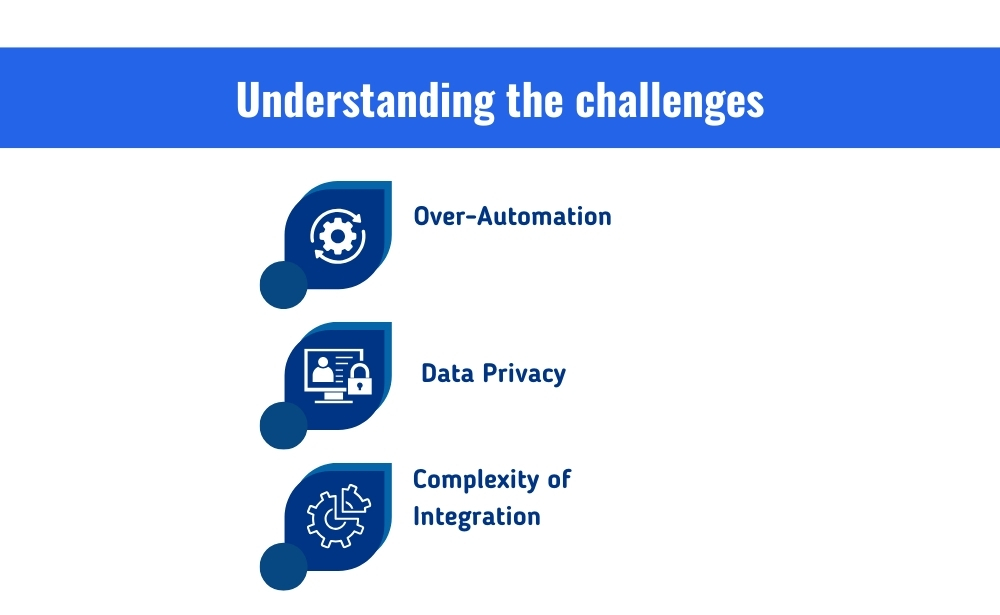
By understanding these challenges and addressing them head-on, businesses can maximize the effectiveness of their automated B2B outreach strategies, driving better engagement and results.
Conclusion
Automated B2B outreach is more than just a trend—it’s the future of sales. By embracing automation, businesses can optimize their outreach strategies, improve scalability, and focus on what truly matters: building relationships and closing deals. Automation tools make the sales process more efficient, accurate, and cost-effective, allowing your team to handle a higher volume of leads with the same level of attention and care.
Tools like GoMeet AI provide comprehensive B2B automation solutions, helping businesses streamline their outreach efforts and focus on high-impact tasks. By incorporating B2B outreach automation into your sales process, you’re setting your business up for long-term success in an increasingly competitive market.

